A revolution could occur in July 1917. Armed Uprising in Petrograd
Anarchists of Petrograd between February and October
During the February revolution of 1917, the anarchists, who previously had no strong positions in the Russian capital, were able to create several active and militant organizations in Petrograd. The total number of anarchists in the city in the period under review reached 18 thousands of people, united into several large and influential organizations and many isolated groups. The largest of these was the Petrograd Federation of Communist Anarchists, the actual leadership of which was carried out by Ilya Solomonovich Bleichmann (1874-1921), better known among revolutionaries under the pseudonym "Solntsev." He was one of the "veterans" of the Russian anarchist movement, who began his revolutionary path in the late 19th century. A native of the town of Vidzsk, Kovno Province, in his youth, Bleichmann worked as a shoemaker, then as a tinsmith, and in 1897, he joined the revolutionary movement. A little later he had to emigrate from the country, and he joined the anarchist communists in 1904, already being abroad. In Russia, Bleichmann returned before the start of the First World War and engaged in revolutionary agitation - first in Dvinsk, and then in St. Petersburg. In July, 1914, he moved to the illegal position. In 1917, Mr. Bleichmann was one of the initiators of the creation of the Petrograd group of anarchists — the Communists, in whose composition he participated in the February Revolution. In March, 1917. Bleichmann, as a representative of anarchists, became part of the Petrograd and Kronstadt Soviets of Workers 'and Soldiers' Deputies. 7 March 1917. Bleichmann, speaking before the members of the working section of the Petrograd Soviet, demanded that communist anarchists be allowed as full deputies to the council, to allow anarchists to publish their own journal weapons. In general, after February 1917, Mr. Bleichmann occupied a leading position among the Petrograd anarchists, the Communists, distinguished by a radical, uncompromising position with respect to the Provisional Government. According to Bleichmann, it was necessary to immediately carry out a new revolution and liquidate state institutions, transferring the full control to the people directly. Another major organization was the Union of Anarcho-Syndicalist Propaganda. Under the control of the anarchists was part of the formations of the workers of the Red Guard and factory committees. The most authoritative ideologue and propagandist of the Union of anarcho-syndicalist propaganda was Efim Yarchuk. He was born in 1882 in the town of Berezno, Volyn province, and was a tailor by profession. In 1903, Yarchuk joined anarchists, participated in the activities of the Kropotkinist anarchist communist group “Bread and Freedom” in Bialystok and Zhytomyr, in 1913 he emigrated to the USA. Yarchuk returned to Russia at the beginning of 1917 and was elected a deputy of the Petrograd Soviet. He led the revolutionary propaganda among the sailors of Kronstadt, actually conducting anarchist agitation among them. A significant role in the activities of the anarchists and the squad played Beetle.
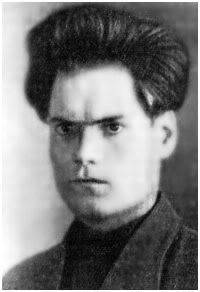 Justin Petrovich Zhuk (1887-1919) was from a simple peasant family in the Settlement of the Kiev Gubernia. In 1904, he graduated from a two-year school at the Gorodishchensky sugar factory and continued to work in the factory chemical laboratory. In 1905, he joined the revolutionary movement, and in the spring of 1907, he was arrested, but soon released. In the vicinity of Kiev, Zhuk created and headed the South Russian Federation of Anarchist Syndicalist Peasants. According to materials from the Kiev gendarme department, Justin Zhuk was characterized as the leader of the Cherkasy group of anarchist communists and "the soul of all the robber attacks and murders that took place in 1907-1908." In 1909, the city of Zhuk was nevertheless arrested and sentenced to death, but then it was replaced by life penal servitude, which the Bug was serving in the Smolensk Central, and then in the Schlusselburg Fortress. 28 February 1917, a squad of workers of the Shlisselburg powder factory, liberated 67 prisoners of the fortress. Among them was the Beetle, who immediately entered the powder factory as an assistant mechanic and created a working squad. The factory committee under the leadership of Zhuk actually exercised revolutionary control over the entire Shlisselburg. The Red Guard of Shlisselburg was created, becoming one of the most combat-ready revolutionary armed formations.
Justin Petrovich Zhuk (1887-1919) was from a simple peasant family in the Settlement of the Kiev Gubernia. In 1904, he graduated from a two-year school at the Gorodishchensky sugar factory and continued to work in the factory chemical laboratory. In 1905, he joined the revolutionary movement, and in the spring of 1907, he was arrested, but soon released. In the vicinity of Kiev, Zhuk created and headed the South Russian Federation of Anarchist Syndicalist Peasants. According to materials from the Kiev gendarme department, Justin Zhuk was characterized as the leader of the Cherkasy group of anarchist communists and "the soul of all the robber attacks and murders that took place in 1907-1908." In 1909, the city of Zhuk was nevertheless arrested and sentenced to death, but then it was replaced by life penal servitude, which the Bug was serving in the Smolensk Central, and then in the Schlusselburg Fortress. 28 February 1917, a squad of workers of the Shlisselburg powder factory, liberated 67 prisoners of the fortress. Among them was the Beetle, who immediately entered the powder factory as an assistant mechanic and created a working squad. The factory committee under the leadership of Zhuk actually exercised revolutionary control over the entire Shlisselburg. The Red Guard of Shlisselburg was created, becoming one of the most combat-ready revolutionary armed formations. In May 1917, the anarchists of Petrograd held two armed demonstrations against the policies of the Provisional Government. At about the same time, anarchists seized the empty building of the Durnovo dacha. The dacha building in 1813, for 104 of the year before the events described, was acquired by Dmitry Nikolaevich Durnovo, the chief master of the imperial court, after which it was inherited by the representatives of the name Durnovo. After the February Revolution, the headquarters of the Petrograd Federation of Communist Anarchists was located here. In fact, Petrograd anarchists turned Durnovo’s dacha into an analogue of the modern “squat” - the unauthorizedly-seized premises used for social and political needs. In addition to the communist anarchist headquarters, the dacha also housed the trade unions board of the Vyborg side of Petrograd, the bakers trade union, the Prosvet work club, the workers' commissariat of the 2 working militia of the Vyborg subdistrict, the council of the Petrograd people's militia. However, the anarchists felt most confident and in fact were the “new owners” of the dacha. Naturally, this fact caused great discontent on the part of the authorities, loyal to the Provisional Government. Neither the anarchists themselves, nor their location on the territory of Durnovo cottage, were sympathetic to them. Moreover, the anarchists began to intervene more actively in the social and political life of Petrograd, because they saw the need to continue the revolution and, accordingly, to conduct various political actions.
The capture of the "Russian will" and the headquarters at the cottage Durnovo
5 June 1917 The anarchist combat detachment of 50-70 people, under the command of Ilya Bleichman, arrived at the printing house of the newspaper Russkaya Volya. Bleichmann stated that the workers of the printing houses could be free from capitalist exploitation, and the printing equipment was confiscated by the Federation of Communist anarchists for the needs of further revolutionary activities. After the leadership of the Russkaya Volya newspaper complained to the Petrosoviet, the Petrosoviet Executive Committee described the actions of anarchists as provocative and damaging the reputation of the revolution. However, the anarchists said they did not recognize any power - neither the power of the Provisional Government, nor the power of the Petrograd Soviet. An anarchist leaflet was issued on the equipment of the printing house, the text of which makes sense to quote in its entirety: “To the workers and soldiers! Citizens, the old regime stained itself by crime and treason. If we want the freedom won by the people not to be liars and jailers, we must eliminate the old regime, otherwise, he will lift his head again. The newspaper "Russian will" (Protokopov) deliberately sowing unrest and civil strife. We, the workers and soldiers, want to return the people’s wealth, and therefore confiscate the Russian Will printing house for the needs of anarchism. The treacherous newspaper will not exist. Let no one see in our act a threat to himself, freedom above all. Everyone can write what he pleases. Confiscating the “Russian will”, we are not fighting with the printed word, but only eliminating the legacy of the old regime, which we inform about. Executive Committee for the liquidation of the newspaper "Russian will" ". After the anarchists refused to leave the Russian Will publishing house, the authorities turned to the military for help. Lieutenant-General Peter Alexandrovich Polovtsov (1874-1964), the commander of the Petrograd Military District, led the operation to free the Russian Will. After the detachment of government troops managed to expel anarchists from the Russian Will printing house, the Provisional Government decided to release a more serious object, the Durnovo dacha. 7 Jun. Justice Minister of the Provisional Government N.P. Pereverzev gave the order to release the cottage Durnovo. Since on the territory of the dacha, besides the anarchists, as mentioned above, local trade union and workers' organizations were also located, a big scandal began that went beyond the anarchist movement. In protest against the expulsion of anarchist and workers' organizations from the villa of Durnovo, on the same day, four enterprises located on the Vyborg side struck 7 on June. The striking workers appealed to the Petrograd Soviet not to evict anarchist and workers' organizations from the dacha premises, but were refused.
The second delegation, sent to the Petrosoviet, told the Executive Committee that in case of attempts to evict from the dacha, the anarchists would be forced to put up armed resistance to the government forces. At the same time, propagandists were sent to the enterprises of the city and to the location of the military units of the Petrograd Military District. The day after the order of Minister Pereverzev, 28 enterprises were already on strike. 9 June 1917 a conference was convened at the Durnovo dacha, in which representatives of 95 Petrograd factories and military units participated. At the conference, the Provisional Revolutionary Committee was established consisting of several workers and soldiers' delegates. It is noteworthy that even the Bolsheviks joined the committee, in particular the delegate from the Pavlovsky regiment P.A. Arsky. Anarchists decided on the day after the conference, June 10, to seize several other printing houses and premises. A large demonstration was planned for June 10, the organizers of which were to be the Bolsheviks. Anarchists decided to seize the moment and, while the forces of the government forces were distracted by observing the demonstration of the Bolsheviks, seize the printing houses. However, the All-Russian Congress of Soviets under the influence of the Mensheviks and Socialist-Revolutionaries decided to ban the demonstration, after which an emergency meeting of the Central Committee of the RSDLP (B) canceled the event. Thus, the Bolsheviks refused to popular uprising against the Provisional Government, explaining this by concern for the safety of the workers who were supposed to go on a demonstration.
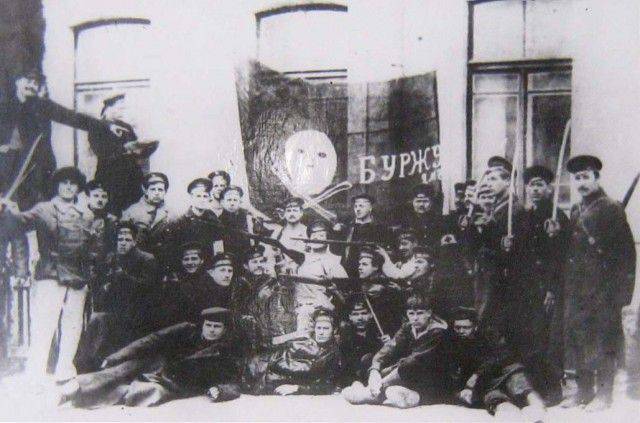
On the appointed day of June 10, in Kronstadt, around 10 thousands of sailors of naval crews, soldiers and workers gathered for a rally, who were awaiting a trip to the capital for a demonstration. The Chairman of the local Council A.M. Lyubovich, who announced the decision of the congress of the councils to cancel the demonstration in Petrograd, which caused a sharply negative reaction from the audience. The representative of the Bolsheviks I.P. Flerovsky tried to explain to the crowd that the masses were not yet ready for a serious protest against the Provisional Government, but his speech was cut short by the protesters. Following Fleurovsky, Efim Yarchuk, one of the most powerful anarchist speakers, spoke. Unlike Bleichman, Yarchuk held a more moderate position and was determined to cooperate with the Bolsheviks. He stressed that without the Bolsheviks, it is impossible to go to a demonstration, because there are not so many forces and a speech can end in a catastrophe, in great human sacrifices. But the sailors and soldiers did not heed even the anarcho-syndicalist leader. The next speaker spoke with the exact opposite position. The anarchist Asnin had just arrived from the Durnovo dacha, especially in order to persuade the sailors and soldiers of Kronstadt to perform in Petrograd. As the Bolshevik I.P. later recalled. Flerovsky, Asnin was very colorful in terms of the appearance of the figure: “a black long cape, a soft wide-brimmed hat, a black shirt with a bummer, high hunting boots, a dad of revolvers in a belt, and in his hand a backhand rifle on which he rested” (Flerovsky I. P. Bolshevik Kronstadt in 1917 year). But with an oratorical gift, Asnin was less fortunate than with an external appearance - he called on the demonstrators of Petrograd to go to help, but he did it so tongue-tied that the public did not accept his calls and continued to rally. As a result, the trip of Kronstadt sailors, soldiers and workers to Petrograd 10 June did not take place - thanks in large part to the propagandists unsuccessfully chosen by anarchists and the activities of the Bolsheviks, the same I.P. Flerovsky, who eventually managed to "pacify the crowd" and ensure that the protesters confined themselves to sending an intelligence delegation to Petrograd.
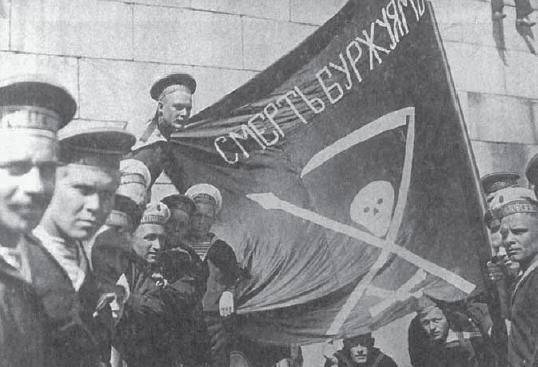
The attack on the "Crosses" and the storming of the villa Durnovo
Meanwhile, in Petrograd, rumors spread that the Provisional Government summoned thousands of Cossacks from the 20 front to defeat the revolutionary movement in the capital. In fact, there was no talk about the transfer of troops to Petrograd, but the Provisional Government, after the release of the Russian Will printing house and the demand for the eviction of anarchists from Durnovo, was so emboldened that June 12 demanded the release of the Kshesinskaya mansion. The headquarters of the Bolsheviks was located in this mansion, but by a court decision, the mansion was supposed to be returned to Kshesinskaya itself. However, the Bolsheviks turned out to be a “tough nut” - the working militia of Petrograd and military units of the Petrograd military district refused to undertake the eviction of the Bolsheviks from the mansion and on the evening of that same day 12 of June the Petrograd Soviet decided to cancel the eviction. In relation to the anarchists, the eviction was not canceled. The Anarchist Provisional Revolutionary Committee was able to invite representatives of 150 enterprises and military units of Petrograd to Durnovo's dacha. It was decided to appoint a protest demonstration against the policy of the Provisional Government on June 14. The Bolsheviks appointed a mass demonstration on June 18, and one of the main slogans on it sounded “Against the offensive policy!” - after all, the unsuccessful June offensive undertaken by the Russian army caused a sharply negative public reaction. 18 June in Petrograd, thousands of demonstrations against the Provisional Government, which was attended by representatives of all radical left-wing revolutionary parties and organizations. During the demonstration, a large detachment of anarchists launched an attack on the building of the famous St. Petersburg prison "Kresty". The “Crosses” contained many anarchists detained at different times and members of other revolutionary organizations. As a result of the raid, a number of anarchists were released and FP Petrov, a member of the Bolshevik Military Organization. Khaustov. However, in addition to Khaustov and the anarchists, a raid on the "Crosses" in order to go free, was also used by about 400 criminals who had escaped from the transit prison. The attack on the “Crosses” was led by Justin Zhuk - the leader of the workers of Shlisselburg, who himself had been sentenced to life in the past and was released just like prisoners of the “Crosses” as a result of an attack on the prison of revolutionaries during the February revolution. In spite of the fact that the Bolshevik leadership officially rejected accusations of the Provisional Government of complicity in the raid on the Kresty, the Bolshevik Party was suspected in collaboration with anarchists and leaders of the RSDLP (b) repeatedly stressing the non-participation of their charges to the release of prisoners.
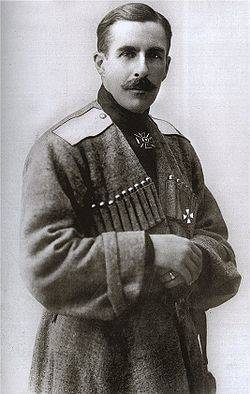 In response to the events of 18 June, the Provisional Government also began more decisive actions. Since information was received that the prisoners freed from the “Crosses” were hiding at Durnovo’s country house, it was decided “to kill two birds with one stroke” - to end the anarchist headquarters and detain the illegally released prisoners. On June 10, the Justice Minister of the Provisional Government Pavel Nikolaevich Pereverzev, the prosecutor of the Petrograd Court of Justice Nikolai Sergeevich Karinsky and the commander of the troops of the Petrograd military district Lieutenant-General Petr Alexandrovich Polovtsov arrived at the Durnovo dacha dacha (pictured). Of course, high-ranking officials did not come alone - they were accompanied by an infantry battalion with an armored car and a Cossack hundred of the 19 Don Regiment. The Cossacks and soldiers began storming the dacha, which killed one of the prominent activists of the Petrograd Federation of Communist Anarchists-Sh. Asnin is the very unfortunate speaker who spoke before the sailors of Kronstadt. During the attack on Durnovo’s dacha, 1 people were arrested, including several detainees who had been released from the “Crosses” the day before. Pereverzev and Polovtsov even had to make excuses for the raid to Durnovo's dacha before the Congress of Soviets. All the more so that on the evening of the same day, workers of four Petrograd enterprises protesting against the policy of the Provisional Government in relation to revolutionary organizations went on strike on June 59. Anarchist agitators went to the enterprises and military units of Petrograd with the aim of immediately raising to the protest action workers, soldiers and sailors and, thereby, avenging the Provisional Government for its "counter-revolutionary policy."
In response to the events of 18 June, the Provisional Government also began more decisive actions. Since information was received that the prisoners freed from the “Crosses” were hiding at Durnovo’s country house, it was decided “to kill two birds with one stroke” - to end the anarchist headquarters and detain the illegally released prisoners. On June 10, the Justice Minister of the Provisional Government Pavel Nikolaevich Pereverzev, the prosecutor of the Petrograd Court of Justice Nikolai Sergeevich Karinsky and the commander of the troops of the Petrograd military district Lieutenant-General Petr Alexandrovich Polovtsov arrived at the Durnovo dacha dacha (pictured). Of course, high-ranking officials did not come alone - they were accompanied by an infantry battalion with an armored car and a Cossack hundred of the 19 Don Regiment. The Cossacks and soldiers began storming the dacha, which killed one of the prominent activists of the Petrograd Federation of Communist Anarchists-Sh. Asnin is the very unfortunate speaker who spoke before the sailors of Kronstadt. During the attack on Durnovo’s dacha, 1 people were arrested, including several detainees who had been released from the “Crosses” the day before. Pereverzev and Polovtsov even had to make excuses for the raid to Durnovo's dacha before the Congress of Soviets. All the more so that on the evening of the same day, workers of four Petrograd enterprises protesting against the policy of the Provisional Government in relation to revolutionary organizations went on strike on June 59. Anarchist agitators went to the enterprises and military units of Petrograd with the aim of immediately raising to the protest action workers, soldiers and sailors and, thereby, avenging the Provisional Government for its "counter-revolutionary policy."The first machine gun - the "shotman" uprising
The strongest protest moods prevailed among the soldiers of the 1 machine gun regiment. The first machine-gun regiment was almost comparable in size to the division — it served around 300 officers and 11 340 lower ranks. Initially it was assumed that the regiment in which the machine-gunners underwent combat training would form and send a marching company to the front every week. However, failures at the front were accompanied by the fact that fermentation began among the soldiers of the regiment. When the June offensive began, the Provisional Government immediately ordered to form and send 30 machine guns to the front. In response, the regimental committee declared that it would not send a single marching company until the war assumed a “revolutionary character”. Most of the soldiers of the regiment did not want to fight and sympathized with revolutionary ideas, sympathizing with both the Bolsheviks and the anarchists. By the way, the anarchist communist Asnin, who died during the assault on the Durnovo dacha, was a frequent visitor to the regiment’s barracks and enjoyed great prestige among the personnel. Therefore, as soon as the regiment became aware of Asnin’s death as a result of the attack on Durnovo’s dacha, the soldiers became agitated — there was another reason for an armed uprising.
The idea of an immediate armed uprising put forward by the anarchist leader Ilya Bleikhman was supported by the commander of the 1 machine gun regiment, Ensign Semashko, who was part of the Military Organization under the Central Committee of the RSDLP (B) (the modern commander’s title “ensign” at the commander of the regiment could confuse a detachment, they can confuse, in a way, they can confuse, they can remind, The February 1917 revolution, the positions of commanders in military units became elective and the regimental committee, as a rule, elected revolutionary-minded officers or non-commissioned officers to these positions.
On the night of 2 July 1917, in the “red room” of the Durnovo dacha, where anarchists continued to gather, a secret meeting of the leadership of the Petrograd Federation of Communist Anarchists took place, which was attended by 14 people, including such prominent anarchists as Ilya Bleichman, P. Kolobushkin, P Pavlov, A. Fedorov. At the meeting it was decided to immediately prepare an armed uprising under the slogan "Down with the Provisional Government!" And to mobilize the entire staff of the Petrograd Federation of Communist Anarchists. It was decided to send agitators to the location of the 1 machine gun regiment, which was considered the support of the anarchists. In the morning of July 2, 43-year-old Ilya Bleichmann went there, dressed as a soldier’s overcoat. In the afternoon of July 3, a large rally was held to send soldiers to the front. This time the rally was organized by the Bolshevik Party. Kamenev, Zinoviev, Trotsky, Lunacharsky and other popular Bolshevik speakers were expected to speak. However, Zinoviev and Kamenev did not come to the regiment, but Trotsky and Lunacharsky, who did not dissuade the soldiers of the regiment from the idea of an armed uprising, came out. In the meantime, the anarchists, dressed as workers, soldiers and sailors, campaigned among the personnel. Ilya Bleichmann called on the regiment for an immediate uprising. The Bolsheviks, seeing that the soldiers were close to an armed uprising, tried to carry out the idea of immediately transferring all the power to the Soviets. However, the Social Revolutionaries and Mensheviks, who controlled the All-Russian Central Executive Committee, opposed this idea. Then the Bolsheviks demanded the convening of an emergency session of the working section of the Executive Committee of the Petrograd Soviet, at which they adopted the resolution “In view of the crisis of power, the working section considers it necessary to insist that Vser. Congress of the CDS and K. Dep. He took all the power in his hands. ” In fact, this meant that the Bolsheviks headed for the overthrow of the Provisional Government.
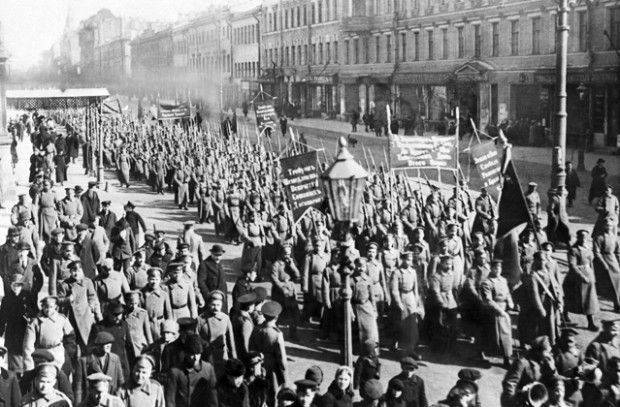
Rise of July 3-5
In 19.00 3 July 1917, the armed units of the 1 machine gun regiment left their barracks and moved towards the Kschesinska mansion, where they reached the 20.00. Around 23.00, in the Gostiny Dvor area, there was an exchange of fire with supporters of the Provisional Government, in which several people were killed. On the night of 3 on 4 July, a meeting of members of the Central Committee, the Petrograd Committee of the RSDLP (b), the Interdistrict Committee of the RSDLP and the Bolshevik Military Organization was held at the Tavrichesky Palace to discuss the current military-political situation in the city. Meanwhile, a thirty-thousandth column of workers of the Putilov factory approached the Tauride Palace. After that, the leadership of the Bolsheviks decided on the participation of the party in the performance of soldiers, sailors and workers, but it took a course to turn the armed uprising into a peaceful demonstration. In the morning of July 4, several detachments of sailors of the Baltic Fleet moved from Kronstadt to Petrograd on tug and passenger steamers, while the 1917 machine gun regiment advanced from Oranienbaum under the ideological influence of the Bolsheviks. On the streets of Petrograd, a crowd of tens or even hundreds of thousands of people gathered. Armed opponents of the Provisional Government moved across the Trinity Bridge along Sadovaya Street, Nevsky Prospect and Liteiny Prospect. At the corner of Panteleimonovskaya Street and Liteiny Prospect, a detachment of Kronstadt sailors opened machine-gun fire from the window of the house. Three seamen were killed, ten were injured, after which the Kronstadters opened indiscriminate shooting at the house and the courtyards. Several exchanges of fire took place in other parts of the demonstration following - militants of right-wing organizations entered into clashes with demonstrators. The criminals, who plundered private apartments and shops along the route of the demonstrators, have also intensified. On the night of 2 on 4 July, the Social Revolutionary Menshevik Central Executive Committee of Soviets declared martial law and called the Volynsky regiment to guard the Tauride Palace. On negotiations with the Central Executive Committee on behalf of the demonstrators went 5 delegates, among whom was I.V. Stalin (Dzhugashvili). The executive committee of Petrosovet was represented by its chairman N.S. Cheidze. The anarchist group managed to break into the Tauride Palace in search of Justice Minister Pereverzev, one of the perpetrators of the situation. However, the anarchists did not find Pereverzev and instead of him grabbed the Minister of Agriculture Chernov. He was taken to a car, beaten a little and said that they would be released only after the transfer of power to the Soviets. Only with the help of Leon Trotsky, Chernov was released.
When the commander of the Petrograd Military District, Lieutenant General Polovtsov, learned about the arrest of Minister Chernov and other violent actions of the rebels in the Tauride Palace, he decided to suppress the uprising by military means. An operational detachment was formed under the command of Colonel Rebinder, which included two guns of the cavalry-artillery regiment and one hundred Cossacks of the 1-th Don regiment. The Rebinder detachment was tasked to reach the Tauride Palace and disperse the crowd with volley guns. However, at the intersection of Shpalernaya Street and Liteiny Prospect, a machine gun was fired at Rebinder's detachment. In response, the gunners gave three volleys - one projectile exploded in the area of the Peter and Paul Fortress, the second dispersed the rally in the area of the Mikhailovsky Artillery School building, and the third fell into the positions of machine gunners who shot at the squadron and killed 8 rebels. The crowd at the Tauride Palace, frightened by artillery volleys, dispersed. During the shootout, 6 Cossacks, an 4 soldier of a horse-artillery regiment, also died. An important role in the dispersal of the crowd was played by Captain Tsaguria, who was on a business trip in Petrograd and voluntarily joined the Rebinder detachment.
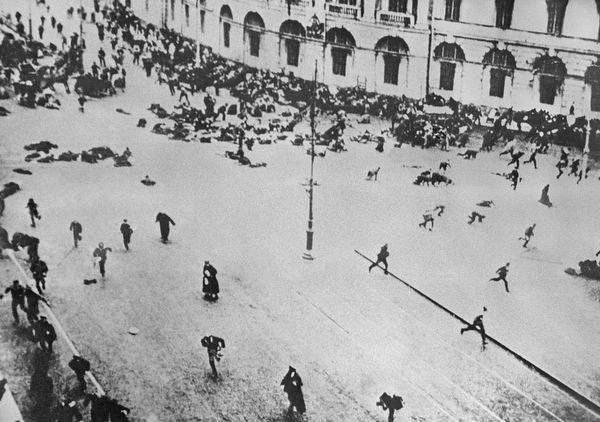
On the morning of July 5, most of the sailors returned to Kronstadt. Nevertheless, part of the Kronstadt sailors strengthened in the Peter and Paul Fortress, captured by anarchists from the 16 Company of the 1 Machine Gun Regiment. July 6 squad under the command of the Deputy Commander of the Petrograd Military District, Captain A.I. Kuzmina captured the mansion of Kshesinskaya, and the Bolsheviks decided not to provide armed resistance to the government forces. After taking the mansion of Kshesinskaya, government troops surrounded the Peter and Paul Fortress. After negotiations with the anarchist Yarchuk and the Bolshevik Stalin in the fortress, the fortress was also surrendered without a fight. In return, the sailors who defended the fortress were sent to Kronstadt. To ensure public order, military units mobilized from the front immediately arrived in the capital. The Minister of War Alexander Fedorovich Kerensky arrived as well. The uprising was actually crushed and the Provisional Government for a short period strengthened its position, significantly limiting the power of the Soviets. However, it cannot be said that the revolutionary parties suffered an absolute defeat in the July uprising. In many ways, they managed to achieve certain changes in the policies of the Provisional Government. 7 July was dismissed from his post, Justice Minister Pereverzev, responsible for the defeat of giving Durnovo. A little later, the chairman of the Provisional Government, Prince Lvov, announced his resignation. Thus, the July events of 1917 ended with the formation of the second composition of the Provisional Government - this time under the leadership of Alexander F. Kerensky. In the new Provisional Government, most of the ministerial posts belonged to the already radical democratic forces and moderate socialists - first of all, right-wing socialist revolutionaries and Mensheviks. Vladimir Ilyich Lenin, fleeing persecution, immediately fled Petrograd, like some other prominent Bolshevik leaders.
The fate of the key figures of the uprising
Despite the suppression of the July uprising, after a few months the power of the Provisional Government was overthrown as a result of the October Revolution. Practically all the same people who actively supervised the rebel soldiers, sailors and workers in July 1917 took an active part in it. Their destinies were subsequently formed differently - someone died on the Civil Front, someone died his death in native Russia or outside. Anarchist Ilya Bleichmann after the suppression of the uprising was prosecuted by the Provisional Government. In the summer of 1917, he became secretary of the Petrograd Federation of anarchist groups, and during the October Revolution he supported the Bolshevik line and 28 of October 1917 was introduced into the Petrograd Military Revolutionary Committee as a representative of anarchist communists. However, as early as 1918, when the Soviet government began the persecution of not quite compliant anarchists, Bleichmann arrested the Cheka. He fell ill at logging and was released due to illness, after which he moved to Moscow, where he died in 1921 at the age of 47. Efim Yarchuk, like Bleichman, supported the October Revolution. He was elected delegate of the All-Russian Congress of Soviets from Kronstadt, became a member of the Petrograd Military Revolutionary Committee as a representative of the Union of anarcho-syndicalist propaganda. In January, 1918 Yarchuk led a detachment of sailors to the South, where he participated in the defeat of General Kaledin's troops. After returning to Petrograd, he continued anarchist activity as part of organizations of Russian anarcho-syndicalists, was repeatedly arrested by the Cheka, but then released. In February, 1921. Yarchuk joined the five members of the Commission for the organization of the funeral of Peter Alekseevich Kropotkin. 5 January 1922 was among the ten prominent anarchists expelled from the USSR. For some time he lived in Germany, but in 1925, he decided to return home. Further, his tracks are lost. It is possible that he was a victim of political repression.
Two other anarchist leaders — participants in the July events — sided with the Bolsheviks and died heroically in the flames of the Civil War. Justin Zhuk in the days of the October Revolution commanded a detachment of the Red Guard of Shlisselburg from 200 workers, who had arrived to take part in the storming of the Winter Palace. In 1918, Zhuk worked as a district food commissar in Shlisselburg, and in August, 1919 became a member of the Military Council of the Karelian front. October 25 1919 d. He died in battle with whites. Anatoly Zheleznyakov (1895-1919) after the suppression of the July uprising was arrested by the Provisional Government and sentenced to 14 penal servitude. However, in early September 1917 he managed to escape from the "Crosses". Zheleznyakov continued active propaganda activities among the sailors of the Baltic Fleet. On October 24, he commanded the 2 squadron of the fleet crew that captured the building of the Petrograd Telegraph Agency, and the next day stormed the Winter Palace as part of the combined crew of sailors of the Baltic Fleet. October 26 Zheleznyakov was included in the Naval Revolutionary Committee. In early January, 1918 of Zheleznyakov was appointed commandant of the Tauride Palace, and it was in this position that he became nationally known for having dispersed the Constituent Assembly with the words "the guard was tired." In January, 1918 Zheleznyakov also went to the front, where he participated in hostilities as an assistant to the commander of the sailors, then the chairman of the revolutionary headquarters of the Danube Flotilla and the commander of the Elansky infantry regiment in the Kikvidze division. In May, the 1919 of Zheleznyakov coined the Khudyakov armored train as part of the 14 Army, which was engaged in battles with Denikin. During one of the battles in the area of the Verkhovtsevo Zheleznyakov station, he was wounded and taken to Pyatikhatki, where on the following day 27 July 1919 died at the age of 24 years.
Nikolay Ilyich Podvoisky (1880-1948), who led the Bolshevik Military Organization and took the most active part in revolutionary agitation among the masses of soldiers, until March 1918 held the position of People's Commissar of the RSFSR for military and naval affairs. It was the peak of his revolutionary and state career. In 1921, he resigned from prominent military posts and until his retirement in 1935, he was involved in sports management. During the defense of Moscow in 1941, the personal pensioner Podvoisky asked for the front, but was refused because of his age and volunteered to dig trenches near Moscow. As for the direct leader of the suppression of the uprising of Lieutenant-General Polovtsov, he emigrated from Russia in 1918 from Russia and lived for a long time in Great Britain, then in France, and settled in Monaco in 1922. In Monaco, he worked as director of the famous Monte Carlo casino, participated in the activities of the Masonic lodges. By the way, it was Polovtsov who lived more than all the most important figures of July 1917 of the year - he died in 1964 at the age of 89 years. The ex-Minister of Justice Pavel Pereverzev was also lucky - he went to France, where he became the head of the Federation of Russian Lawyers' Organizations Abroad and died in 1944 at the age of 73.
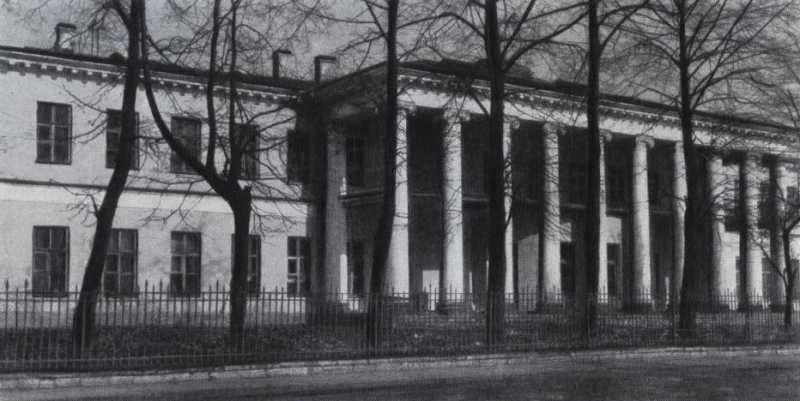
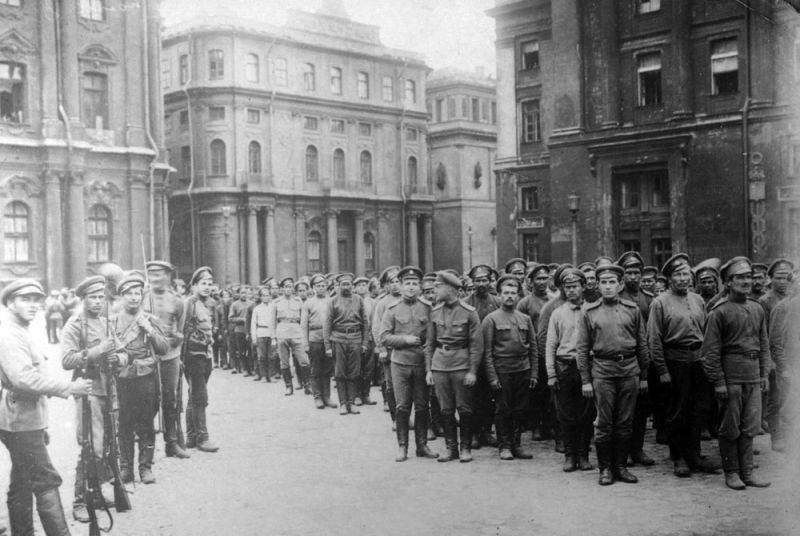
Information